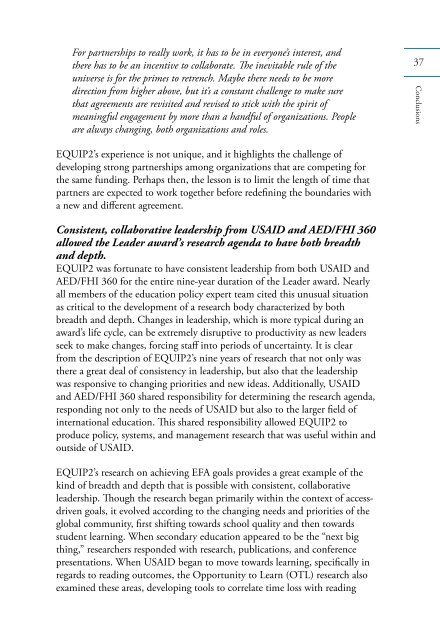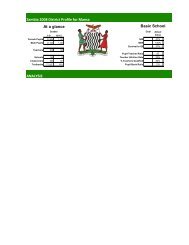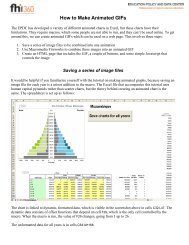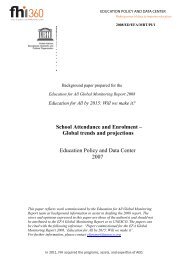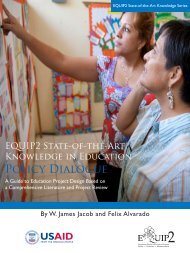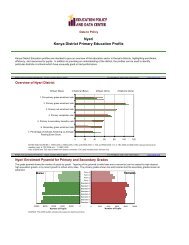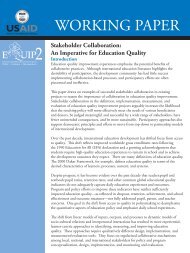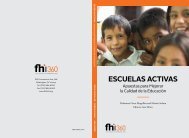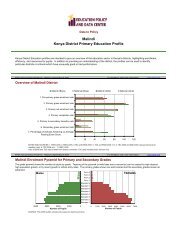EQUIP2 Final Report.pdf - Education Policy Data Center
EQUIP2 Final Report.pdf - Education Policy Data Center
EQUIP2 Final Report.pdf - Education Policy Data Center
You also want an ePaper? Increase the reach of your titles
YUMPU automatically turns print PDFs into web optimized ePapers that Google loves.
For partnerships to really work, it has to be in everyone’s interest, and<br />
there has to be an incentive to collaborate. The inevitable rule of the<br />
universe is for the primes to retrench. Maybe there needs to be more<br />
direction from higher above, but it’s a constant challenge to make sure<br />
that agreements are revisited and revised to stick with the spirit of<br />
meaningful engagement by more than a handful of organizations. People<br />
are always changing, both organizations and roles.<br />
37<br />
Conclusions<br />
<strong>EQUIP2</strong>’s experience is not unique, and it highlights the challenge of<br />
developing strong partnerships among organizations that are competing for<br />
the same funding. Perhaps then, the lesson is to limit the length of time that<br />
partners are expected to work together before redefining the boundaries with<br />
a new and different agreement.<br />
Consistent, collaborative leadership from USAID and AED/FHI 360<br />
allowed the Leader award’s research agenda to have both breadth<br />
and depth.<br />
<strong>EQUIP2</strong> was fortunate to have consistent leadership from both USAID and<br />
AED/FHI 360 for the entire nine-year duration of the Leader award. Nearly<br />
all members of the education policy expert team cited this unusual situation<br />
as critical to the development of a research body characterized by both<br />
breadth and depth. Changes in leadership, which is more typical during an<br />
award’s life cycle, can be extremely disruptive to productivity as new leaders<br />
seek to make changes, forcing staff into periods of uncertainty. It is clear<br />
from the description of <strong>EQUIP2</strong>’s nine years of research that not only was<br />
there a great deal of consistency in leadership, but also that the leadership<br />
was responsive to changing priorities and new ideas. Additionally, USAID<br />
and AED/FHI 360 shared responsibility for determining the research agenda,<br />
responding not only to the needs of USAID but also to the larger field of<br />
international education. This shared responsibility allowed <strong>EQUIP2</strong> to<br />
produce policy, systems, and management research that was useful within and<br />
outside of USAID.<br />
<strong>EQUIP2</strong>’s research on achieving EFA goals provides a great example of the<br />
kind of breadth and depth that is possible with consistent, collaborative<br />
leadership. Though the research began primarily within the context of accessdriven<br />
goals, it evolved according to the changing needs and priorities of the<br />
global community, first shifting towards school quality and then towards<br />
student learning. When secondary education appeared to be the “next big<br />
thing,” researchers responded with research, publications, and conference<br />
presentations. When USAID began to move towards learning, specifically in<br />
regards to reading outcomes, the Opportunity to Learn (OTL) research also<br />
examined these areas, developing tools to correlate time loss with reading


